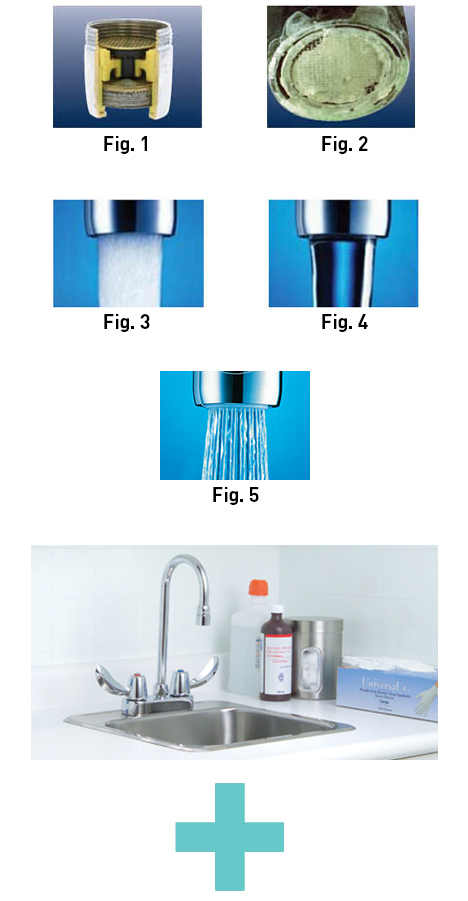Every time a faucet is turned off a few drops of water are trapped inside the aerator (or laminar device) where
they stagnate, warm up and eventually evaporate. This leaves a film of scale, a source of food for biofilm.
+ Water stagnation
Water droplets become trapped inside the faucet aerator. Traditional laminar devices constructed with a thick pile
of wire mesh screens trap water droplets even more. (Fig. 1.)
+ Warm water
Warm room air (65-80 F°) keeps trapped water droplets warm.
+ Food
Sediment & scale build-up on traditional wire mesh screens provide the foundation and food supply for biofilm (Fig. 2)
No, spout-end device means no water stagnation inside the faucet spout-end (water drains out) but...
+ the water flow is unrestricted (no flow rate control) and can reach over 5 gpm: water and energy are wasted.
+ even if a separate flow regulator is installed, without a flow straigtener at the end of the spout, the stream splashes
when washing hands or equipment.
+ the inside of the spout still retains water but is now open to direct contamination by splashes when fluids are poured
into the lavatory or sink.
To produce an aerated stream with up to 50% air, white and soft to the touch, air and water are mixed in the faucet
aerator's mixing chamber. (Fig. 3)
Laminar devices do not draw air into the water stream and produce a non-aerated crystal clear stream of 100% water (Fig. 4)
While well-adapted to public bathrooms for hand-washing (where they save water and energy), faucet sprays are not recommended for use in patients rooms or nurse stations because, among other things, they make filling a glass or a vessel a difficult and lengthy process. They are, however, ideal for public-use bathrooms anywhere within a healthcare facility to further increase water savings.
Spray devices do not draw air into the water stream and each “needle” of the spray can be considered a laminar (non-aerated) stream (Fig.5).
|


